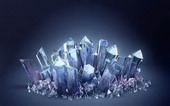Real Images
Dream Therapies
The stigma that has accompanied dreams into our century can be thought of as quite unfortunate. In our society, dreams are often thought of as unimportant or as "pure nonsense.This stigma accompanies all types of dreams, including lucid dreams. There is a very small body of research that indicates the possible therapeutic uses of lucid dreaming. We can see how hard it would be for our society to accept this kind of Therapies if they view the key element, dreaming, as "pure nonsense. Society needs to change the attitudes around dreaming due to the possible benefits that dream Therapies could have on problems such as post traumatic stress disorder. I plan to demonstrate the benefits that lucid dream Therapies could have for the treatment of post traumatic stress disorder and show why society needs to embrace all types of dreaming as an important and useful human resource.
Lucid dreaming has been noted in history numerous times. Aristotle mentioned lucid dreaming (LaBerge, 1988.) Even the philosopher Thomas Reid spoke of using lucid dreams to control his nightmares (LaBerge, 1988.) Some have disputed lucid dreaming and said that there is no such thing. Green and McCreery offer an explanation for the dispute: "If people doubt lucid dreams they do so because they have never experienced one." (1994, p.5.) This is an interesting argument and quite possibly true. Stephen LaBerge explains why some dispute lucid dreams and why this dispute is faulty: "One might object that lucid dreamers are simply not attending to the environment; rather than being asleep, perhaps they are merely absorbed in their private fantasy worlds. . . . . . .if subjects claim to have been awake while showing physiological signs of sleep (or vice versa), we might have cause to doubt their subjective reports."(1990, p.111.) The question that now must be raised is: what is considered to be a lucid dream?
As defined by Green and McCreery "Lucid dreams are those in which a person becomes aware that he is dreaming." (1994, p.1.) Despite the exclusive language, this is a clear and simple definition. Those who have had a lucid dream but are unfamiliar with the terminology could easily recognise their dream as "lucid." Hobson outlines some possible characteristics of lucid dreams and lucid dreamers: "(a) that lucid dreamers will frequently awaken from REM sleep once dream consciousness is achieved and (b) that lucidity will be easiest to induce at times in the night when the system is likely to be changing from REM to waking." (1990, p.38.) This quotation makes lucid dreaming sound quite disruptive to sleep. It is perhaps a relief that LaBerge says "Lucid dreaming is normally a rare experience." (1990, p.109.) I propose that lucid dreaming has a connection to the treatment of post traumatic stress disorder, however before addressing this issue we must outline a definition of post traumatic stress disorder. In Appendix A there are two tables outlining various aspects of post traumatic stress disorder. The first is taken from Ursano, Fullerton and McCaughey (1994, p.9) and the other is from Scurfield (1985, p.233.) In the first table there is a mention of dreams being a symptom of post traumatic stress disorder. This obviously means dreams of the trauma and these dreams are often of a disturbing nature. Kramer gives a definition of what would be considered "disturbing": ". . .our criteria for a disturbing dream: Troubling contents lead to an awakening associated with negative affect and the recall of a prior troubling dream." (1990, p.191.) Other general symptoms of post traumatic stress disorder listed in the tables include feelings of fear, guilt and detachment.
There are many varied ways to treat and provide Therapies for post traumatic stress disorder. The literature indicates that early post trauma intervention and debriefing seem very effective. "Several studies, however, provide a rational for early intervention and delineate its optimal timing and its target population. The first line of evidence concerns the pathogenic effects of the secondary stressors that may follow the trauma itself. . . . Interventions which reduce these secondary stressors may improve the long-term outcome after traumas and disasters." (Shalev, 1994, p. 203.) Shalev also mentions several debriefing techniques such as: Task-oriented debriefing, Historical group debriefing and Psychological group debriefing (1994, p.204-209.) Debriefing is said to have positive effects because it possibly addresses both the emotional overload and the impaired psychic structures, which Shalev explains is the psychological foundation for post traumatic stress disorder
Even though disturbing dreams are said to be a symptom of post traumatic stress disorder, the treatment is non-dream oriented. This is logical because physical problems can be treated in non-physical ways and vice versa. What is illogical is that dream oriented treatment is not considered. This could be simply an oversight, but it could also be an indicator of the aforementioned stigma surrounding dreams. Dream Therapies is not a new phenomenon but it seems unfortunate that it is popular within only select circles or therapists. Lucid dreams could be an important tool for the recovery of post traumatic victims and it is unfortunate that a stigma could be the preventing factor surrounding this type of Therapies.


Green and McCreery say, with no ambivalence, the advantage of lucid dreams: "Release from nightmares is one of the most obviously useful applications of lucid dreaming, and it might be considered in the context of treatment for people suffering from post-traumatic stress disorder in which the sufferer is sometimes tormented by recurrent bad dreams. This quotation could deceivingly show us that researchers are recognising lucid dreaming as a therapeutic technique. The problem with that assumption being that Green and McCreery are in the dream field, not the field of psychological trauma. They are going to recognise the importance of dreams because they are not affected by the stigma that surrounds dreaming. The book Trauma and Disaster has no mention of lucid dreaming, so therefore the obvious connection to post traumatic stress disorder must only be obvious to those who specialise in dreams and not to those who specialise in psychological trauma. It is certainly tempting to blame a stigma for this sort of oversight on the part of trauma psychologists.
Paul Tholey outlined a variety of advantages to lucid dreaming. It is easy to apply these to the notion of post-traumatic stress Therapies. "Advantages to Lucid Dreams:
1. Because of the lucidity, the dream ego is less afraid of threatening dream figures or situations. For this reason, there is less resistance to confrontation with these figures or situations.
2. Using appropriate techniques for manipulating lucid dreaming, the dream ego can get in touch with places, times, situations or persons that are important to the dreamer.
3. Especially in dialogue with other dream figures, the dream ego is able to recognise the present personality dynamics and their etiology (diagnostic function).
4. Through appropriate activity of the dream ego, a change of personality structure is possible (therapeutic of creative function.)" (1988, p.267.)
The first of these advantages involves being less afraid of the threatening situation. If a person suffering from post traumatic stress disorder has a distressing dream about their trauma it could be very beneficial to re-experience the trauma while having more control and less fear. This gives the opportunity for exploration of other possible outcomes or the exploration of feelings in general. The second advantage involves being able to get in touch with certain places/people/situations. A person in Therapies for post traumatic stress disorder could be instructed in their Therapies sessions to use this lucidity to their advantage. If the dreamer becomes lucid they could be instructed to change the setting of their dream to the setting or situation of their trauma and use this shift to initiate exploration. This is only some of the possible connections of lucid dream Therapies to post traumatic stress disorder.
One of the largest advantages could be the element of control that lucid dreaming offers. If the victim of post traumatic stress is often plagued by distressing dreams they could use this control to shift the nature of the dream entirely rather than being left to suffer through the nightmare. They can use this control to deal with the stress in a sort of "virtual" way and also be free to go at a pace that they feel is comfortable. They could also use this control in much the same way the Buddhists do. The Buddhists use lucid dreaming to create their greatest fears and "monsters" in order to "transcend" these things (Gackenbach, 1997.) Certain post traumatic stress victims may use lucid dreaming to push their distressing dreams to the absolute edge of their imagination. Perhaps it could be beneficial to know the "limit," or, how far things could go since sometimes the "unknown" can be worse than the "known."
Paul Tholey also outlined a variety of ways to deal with threatening dream figures. It could be useful to give this outline to post traumatic stress victims so as to instruct them on what to do should they become lucid in a dream with a threatening character:
"Appropriate behaviours toward threatening dream figures:
1. It is useful to confront the threatening dream situation despite rising fears.
2. It is better to reconcile with the dream figure through constructive dialogue than to attack it aggressively.
3. After the dialogue, the threatening figure can be transformed into a friendly one, who can provide help." (1988, p.265.)
Regardless of the exact way that lucid dreaming could be used to treat post traumatic stress disorder, the fact that there are so many diverse ways to use lucid dreams in this type of Therapies is compelling. Surely if there are so many possibilities one of them might find its way into the therapeutic circles. There is no question that dream experts see the importance of lucid dreaming, so why has lucid dream Therapies been overlooked by everyone else? It is possible that with the great variety of possible therapies for post traumatic stress disorder the therapists feel that there is no need for additional methods. Scurfield lists a variety of therapies for post traumatic stress disorder cited from other scientists:
"Various behavioural techniques seem particularly effective: imaginal flooding and implosive Therapies (Black & Keane, 1982; Fairbank & Keane, 1982; Keane & Kaloupek, 1982; Miniszek, 1984); systematic desensitization (Cellucci & Lawrence, 1978; Schindler, 1980); other behavioural techniques such as thought stopping, cognitive restructuring, behavioural biblioTherapies (Marafiote, 1980; Parson, 1984), and establishing ‘hierarchial routes of behaviour’ to improve impulse control (Horowitz & Solomon, 1975). There is some evidence to suggest that flooding may be most effective when used in conjunction with other treatment modalities (Miniszek, 1984)." (1985, p.244.)


This is just a sample of the possible therapies. Scurfield continues on for several paragraphs and, perhaps as expected, makes no mention of dream Therapies. The only mention of treatment for the sleep disturbances associated with post traumatic stress disorder is "psychopharmacological treatment" (Scurfield, 1985, p.244.) This indicates the attitude that you must stop the sleep disturbances and use other methods to treat the disorder, rather than the attitude that using the sleep disturbances constructively could actually be a tool to treat the disorder. One can only speculate at the reasons behind this sort of oversight. Though I have hypothesised that the therapists may feel they do not need additional methods of Therapies, I do not believe that this is the case. It is doubtful that any therapist would say that better means of Therapies should not be explored or discovered. Another factor could be that the ones who do the research on therapeutic methods are not always the therapists. Even if the therapists thought that additional methods were unnecessary, this does not mean that some experimental research would not be done in this area. It is not likely the lack of need which has prevented lucid dream Therapies from being explored, but more likely the previously discussed stigma which presents dreams as useless and nonsensical. It is true that the attitudes surrounding dreams are changing. These changes are characterised by the growing field of dream research and dream experts, but not the development of positive dream attitudes in non-dream-oriented psychology. Better attitudes surrounding dreams in non-dream psychology must be developed before dream Therapies reaches a popular status.
There are some potential problems with lucid dream Therapies. Some of these could be the nature of lucid dreaming itself. We have already learned that lucid dreaming is a rare occurrence.(LaBerge, 1990.) What if the decision was made to use lucid dream Therapies and the patient could not achieve lucidity? Lucidity can be "induced" or helped by a variety of means (Gackenbach, 1997) but this is still no guarantee. Another problem is lack of dream recall. The use of lucid dreams would be useless if the dreamer had no recollection of the events. One could argue that if the dreamer gained control to "tone down" the fear in the dream, they would be less likely to wake up with disturbed feeling from the nightmare, even if they did not remember the next day. Regardless of the recall, the dreamers sleep would not be disrupted. We have already seen that lucid dreaming can produce an awakening (Hobson, 1990) so the argument can be made that the lucidity will produce the same amount of awakenings as the nightmares. The affect will certainly be different, which is a benefit to the lucid induced awakening.
The benefits of lucid dream Therapies seems to outweigh the possible disadvantages. The advantages hinge on the assumption that dream recall will be high and that the subjects will become lucid easily. These are large assumptions but they are not so large that they are the preventing factor of lucid dream Therapies research. Research could still be possible while outlining these difficulties, so why has this not been addressed? Again, we return to the repeatedly mentioned stigma. Evidence has been presented to show the advantages of lucid dreaming for treating disturbing dreams. It has been noted that disturbing dreams are a key symptom of post traumatic stress disorder (Parker, 1996.) It has also been shown that lucid dreaming, though thought to treat disturbing dreams, has not been used in post traumatic stress Therapies. Since we know there is a stigma surrounding dreams it is possible and logical to draw the conclusion that this stigma a factor in the omission of dream Therapies from the treatment of post traumatic stress disorder. When the attitudes surrounding dreams and dream Therapies changes in the scientific circles it is quite possible that lucid dream Therapies will be used in the treatment of post traumatic stress disorder.
Dream Work
"Working with dreams" means remembering and exploring the dreams from sleep with an eye to their deeper meanings. Each one of us is uniquely blind to the deeper meanings of our own dreams, and dream work helps us see what amazing gifts are there, just below the surface of "manifest content" and obvious appearance.
It is my assumption that all dreams come in the service of health and wholeness and that only the dreamer knows for certain what his/her dream means.
I have been deciphering dreams for 30 years. There are classic or archetypal dreams which come up time and again. Below, under the category dreams are links to some of the most frequently occurring dreams and my viewpoint on them.
What follows is only a reflection of patterns of recognition that other dreamers have had in exploring similar dreams. Remember, your own "aha!" of recognition is the only reliable indication that these common, archetypal meanings actually apply to your dream.
This is one of the ways of talking about the intra-psychic reality Carl Jung calls "archetypes of the collective unconscious," or, alternately, "symbolic patterns of meaning in the objective psyche." The most important thing to remember, from my point of view, is that anything worthy of the noble name "symbol," (to say nothing of "universal" archetypal symbols), has inherent in it multiple levels of meaning simultaneously.
A reasonably good example is the image of blood in dreams. When blood appears as part of the manifest content of a dream, it is very likely to carry a collective/archetypal symbolic implication associated with "blood relations/family/tribe."
The question: Are you of my blood, or are you not? is universally asked and understood in the same way , in all cultures, all periods of history. At the same time, the appearance of blood in the dreams of a male is very likely to evoke more anxiety and distress than a similar appearance of blood in the dreams of a woman, for farily obvious reasons, many of which are associated with the direct feminine experience of child birth and the menstrual cycle, which men may appreciate or even identify with, but which men will not experience.
At the same time, there will also be all sorts of levels of meaning of blood that relate to the individual dreamer's specific, unique personal experience - a professional butcher, a surgeon, a hunter, et al, will carry (emotionally) the image of blood in a dream differently, then, say a passionate vegetarian or a person who has suffered trauma in battle, or a train wreck, etc. All these levels of meaning and significance will co-exist with the dream image simultanesously.


Ideal numbers start around 5 and begin to peter out around 10 (the more folks you have, the longer each piece of work exploring the dream is likely to take).
Ideal meeting schedules are regular and range from once-a-week to once-a-month. Don't forget to consider creative solutions such as doing the work over the internet, or on the phone.
Every dream group (at least in the early stages) should have a mutually agreed number of meetings. People may be interested enough to want to continue the group, but every group out to have a regular rhythm of self-reflection and re-examination of its purpose and reason for being. Groups often bond up and continue the same membership for years, but they all need to look at their evolving process; sometimes some members of the group may want to leave, or to take a break at regular intervals.
If and when an on-going goup begins to feel "stale," it is a good idea to try new techniques of exploring the dream (e.g. Gestalt work, making dream art and/or poetry, dream theater, mask making, various shamanic techniques like drumming, etc). You can even hire a pactitioner of one or more of these techniques as a temporary facilitator.
The most important thing is to understand that ALL the various techniques of exploring dreams, even the most seemingly "occult" and "magical" are ultimately based on unconscious projections. I believe that the group projective "if it were my dream" techanie is the best foundational practice to use in exploring th edeeper meanings of dreams.
The "if it were my dream" technique is the gratest safety net there is in the work. If a group feels that a particular dreamer's issues are greater than the individuals in the group care to deal with, they should just say so - being particularly careful to use the "if this were my dream" form.
"If this were my dream, it would be pointing to issues in my life that really deserve the focussed attention of a trained professional. I wouldn't want a group of non-therapists to poke around in them." (Just an example of how that might be said in a non-accusatory, non-rejecting way. The heavier the issues that precipitate the need to speak, the more important it is to OWN the projections when speaking about it.
Crystal Therapies
Crystals are millions of years old and through the ages have been much admired for their beauty. In addition to their extraordinary beauty, they are also abounding with healing properties. The later has been harnessed by new age healers and has given rise to a new form of Therapies - Crystal Therapies. While modern medical techniques focus singularly on the alleviation of the physical symptoms of distress, crystal Therapies perceives the individual as a functional, organismic whole that works to attain higher levels of growth and potentiality.
The individual is not seen as comprising isolated units, rather as a complete being, unique in his/her own way and with an innate capacity to achieve the higher levels of growth. Therefore the individual, his entire physical and mental being, level of biological maturity, environmental influences, coping mechanisms and adjustments are keenly studied and analysed before embarking on the line of Therapies. In this sense crystal Therapies, in principal, borrows itself heavily from the particularly its views on human nature.
The presence of energies or chakras within the human system (and even outside it) forms the bulwark of almost all alternate healing therapies ( including Reiki, Healing Touch and Pranic Healing), and crystal Therapies is no exception. It is believed that any kind of discomfort, physical or mental, is usually due to an obstruction in the free flow of this energy within the body. Hence the practitioner usually tries to realign the movement, direction or flow of this energy and create a harmonious environment for the body. This not only frees the body of the immediate physical discomfort, but very often the Therapies reaches out to other unexplored territories and rids the body and mind of other toxins/ailments.
Crystals as an aid to healing has generated a lot of interest as also significance in the medical world. However the entire concept of using external aids such as these is not entirely new and has been in use since a long time. In legends, the people of the mythical land of Atlantis used crystals not just for the purpose of healing but also as a means for attaining spiritual growth. They used natural resources to produce remedies and were known to have harnessed the energy of naturally produced crystals to develop a line of treatment. They believed in the metaphysical notions of universal energy and presence of a field of energy around the individual which is electro magnetic in nature. This second self was called ‘auric body’ and it was as crucial as was the physical body. The curative methods were built keeping these crucial theories in mind. With the aid of crystals and other natural sources, they usually tried to heal the ‘auric body’ first with the belief that the physical body would follow suit.
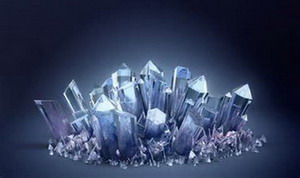
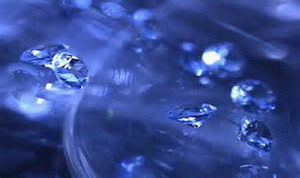
Archaeologists have found various charms and amulets in the graves found in Egypt, Russia, Middle east and Africa. The fact that these gems were placed in graves is a pointer to the immense value they placed on the stones as providers of protection and good health. Crystal skulls were also in vogue in the prehistoric times and were rumoured to have enormous spiritual powers. In ancient Egypt, crystals were widely used and this is substantiated by a study of hieroglyphic papyrus from the year 2000 B.C. Stones such as Lapis, malachite, turquoise, tiger’s eye were not only used to treat various illnesses, they were also believed to have powers that drew out spiritual impurities and blessed the wearer with superior intellect. Crystal Therapies was also very prevalent in the South East Asian countries as Tibet (which used a lot of turquoise to treat illnesses), China (which extensively used jade) and Japan.
In India crystal Therapies was indeed very prevalent and astrological documents dated as early as 400 B.C, as well as verse from the Vedas record the use of crystals, along with flowers, fragrances, animal parts etc, as a means of treatment as well as for attaining higher spiritual powers. Even today, use of crystals to ward off the negative influences caused by certain planetary positions is indeed a flourishing trade. In addition, the indigenous population of America and Australia were also known to have used crystals is their healing processes.
Crystal Heal
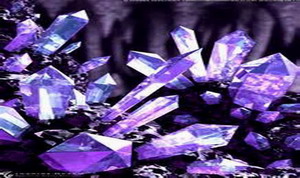

The Therapies is premised on the fact that the human body is a complex electromagnetic system and crystals are natural electromagnetic conductors. Hence whenever the energy flow or chi is obstructed, the person experiences discomfort. With the aid of crystals which are placed at strategic locations on and around the body so as to coincide and resonate with the energy centres present in the body, a certain kind of energy map is created. This helps to cleanse obstructed pathways, nourish those centres that are low on energy, redefine the pathways and finally refine the flow of energy. All this is achieved by inducing the body into a state of mental relaxation where deep seated issues come to fore and are addressed by the practitioner. The collaboration of the mental with the physical self is the cornerstone of crystal Therapies and the real reason behind its success. The actual treatment lasts between one hour to one and a half hours. It may be given alone or in combination with other methods such as reiki. The recipient lies down on a massage table and crystals are placed at strategic locations according to the energy map. The whole body is treated as a singular unit and not as isolated parts. Most recipients report a warm tingling sensation in the body, especially in the area that is being treated.
For a crystal Therapies session to be effective, it has to work on the underlying notions of energy existing in and outside the body. The physical energy present within the body, at various centres or charkas is solid while the aura is a fluid, light entity. Crystals have a definite vibration which affect the electro magnetic field and hence can be harnessed to regularise the flow of energy in the set way that it is supposed to follow. The energy field surrounding the individual is also affected by colour and hence crystals of various hues are used for the treatment of a variety of maladies such as depression, anxiety attacks, sinusitis, sleep disorders, migraines and other types of headaches etc.
Many a time the practitioner works on certain intuitions about the physical conditions of the patient. This is usually not akin to an intuition that a lay person would make. In fact this kind of intuition is done with a practised eye and is most often based on in-depth knowledge. Hence it can be called an ‘informed intuition’. After identification of the problem, specific crystal layouts are placed on the body as part of a cleansing procedure. Thereafter the body is recharged and revitalized by again placing the crystals strategically. At the end of the session, the patient is given a protective grounding of his energies so as to ensure that the positive effects do not wane away.
Crystals are known to have their own special life force or ‘prana’ and the therapist transfers the vibrations to the deepest recesses of a persons being which incidentally is thought to be the active breeding ground for many illnesses. The most commonly used crystals are the quartz crystals because the vibrations they emit are on a wavelength compatible to the cells present in the human body as well as those present in the mind. Hence they are ideal for altering the energy fields and are extremely beneficial to the patient undergoing the Therapies.
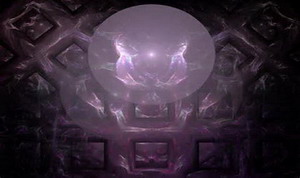
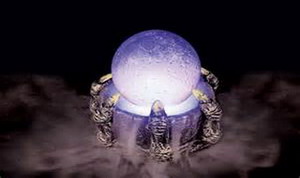
Quartz crystals usually contain silicon deposits. However sometimes they also contain trace elements which alter their colour from white to purple or pink or blue. These trace elements again affect and alter the frequency of the vibrations it emits. The practitioner makes a judgement about the lacunae in the energy processes in and outside the human body and then proceeds to use crystals, sometimes of varying hues to produce the required vibratory level and frequency. Thus it is imperative that the practitioner is well versed about the nature of individual crystals and their effects on the human self. This is in addition to having an in depth knowledge about the overall position of the charkas and where the energy flow is restricted.
There are of course people who are sceptical about the efficacy of this process and in the absence of scientific evidence to document the same, crystal Therapies does face scepticism. Conservative medical practitioners believe that such techniques just pass on a momentary feeling of bliss that is often misread as symptom alleviation. Nevertheless, crystal Therapies is a gentle, non-intrusive healing process that is fast assuming significance in today’s times where lifestyle diseases such as hypertension, high blood pressure, depression, and anxiety based disorders are prevalent. Alone or in consonance with other conservative methods of treatment, as well as other alternate healing processes as reiki, pranic healing or remedial massages, this Therapies has proved to be very effective, especially to those who belief in its power to heal. It induces a deep sense of relaxation and recharges the tired body and mind of an individual. It is also useful for those who are not actually ill but are interested in maintaining a more positive and a healthy life because ultimately the Therapies strives to teach the body to maintain a certain balance which is the main component for a happier, disease free life.
Crystal Energy
Since the beginning of time,crystals have proved to be of great value to mankind.Crystals are used to increase wealth,longetivity,relationships,and for power & popularity.They have curative powers as well as the power to pour in fortune & drive away evil.Certain crystals have the power of healing & fortune giving & have made life happier for many people.
Crystals are mother earth's gift to us,formed within her body,they are living energy,in a way they are the key to the universe.Each particular type of crystal can be seen as a key,& we can use these keys to access specific energies,whether that be for healing,meditation,protection,understanding,as well as a thousand other uses.Many different cultures have utilized the power of crystals for as long as humans have inhabited the earth.
Crystals can help with relaxation,self growth,stress reduction,increased self confidence,heightened awarness & self-awarness,increased spirituality,& restore balance to mind,body & spirit.Crystals also assist the body in shattering & throwing off that which is causing infection or disease.Crystals have long been recognised for their unique healing properties.The energies from crystals react from our aura of energy,energy in the area (office,home and vehicle) & make the balance of energies.The crystals are alive-entities pulsating,radiating & vibrating at different rates.They create strong energy fields,which enable us to be charged with their energies;they activate our abilities,soothe & comfort,heal & balance through the purity & directness of their beams.
This information is not intended to substitute for proper medical attention
Amethyst: sedative energy,stability,strength,peace.
Aquamarine :courage,intellect,protection.
Citrine: positive energy,warmth,joy,optimism.
Garnet: commitment,devotion,love,stability.
Jade: harmony,peace,confidence.
Lapis Lazuli: knowledge,wisdom,perfection.
Malachite: loyalty,fidelity,reasoning ability.
Peridot: healing,protection.



